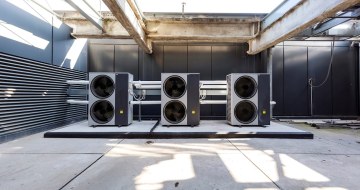
November 6, 2024 in Advisory Notes
Integrated Fire Mode Testing — Fundamental to Buildin...
Modern fire protection systems are now often integrated into other building systems and require a comprehensive testing approach to assure they will o...
May 27, 2021
What are the important building services issues to consider, how can these be best managed and what should be done to prepare buildings for a safe and trouble-free return to occupancy?
A plan should be developed with a HVAC system maintenance service provider. Returning systems to full operation should be managed by qualified and experienced personnel to avoid damaging the plant and the buildings systems.
Consideration should also be given in the plan to new operating circumstances:
Start-up focus should be on equipment pre-start checks and progressively returning plant to full system operation. If 3, 6 or 12 monthly scheduled maintenance services have been missed, these activities should be reviewed and undertaken as appropriate. The following provides general return to operation guidance and should be reviewed with the system’s maintenance schedules:
Packaged Air-Conditioning Plant: Starting units after reduced operation or a protracted shutdown period requires a structured approach to avoid damage.
Central Systems – Mechanical Plant: A good understanding of the plant and systems, and their integrated operation is required when starting plant after reduced operation or a protracted shutdown period. On restarting, common issues can include water and refrigerant leaks, control issues and excessive energy and water use.


Central Systems – Air Handling: On restarting, common issues can include odours and poor indoor air quality, air balancing issues and difficulty in maintaining internal conditions and excessive energy use.
Ventilation Systems:
Stair Pressurisation and Pressurised Exit Systems:
Mechanical Fire Mode System Integration Test:
Building Management and Control Systems:
A partial recommission of HVAC systems and retuning may be required for return to the required performance levels and energy efficiency.
When replacing air filter media and cleaning and/or disinfecting system components, it is important service providers follow approved safe work methods including the appropriate use of Personal Protective Equipment (PPE) and appropriate disposal of used filter media.
Fogging or fumigating is not recommended for normal facilities and standard HVAC systems that are not specifically designed for this treatment. It is very likely to be ineffective and may be hazardous in these situations.

If a cooling tower system has been de-commissioned or been out of use, the system should be reinstated in close consultation with a mechanical services maintenance provider and water treatment service provider. The following steps are a guide:
It should be noted that most Cooling Tower systems cannot practically be fully drained. This results in stagnant water pockets and ensuing microbial growth and corrosion. This can cause significant ongoing issues with both microbial control and system degradation.
For further information refer to A.G. Coombs Advisory Note; Cooling Tower Systems during COVID-19
From COVID-19 there is an increased awareness of the importance of healthy indoor environments. There are practical HVAC operational measures that can be applied along with possible system changes to reduce the likelihood of an infectious disease virus spreading:
Maintenance:
The application of good HVAC system housekeeping and preventative maintenance regimes are imperative. HVAC maintenance should be carried out as prescribed by the recognised standards and maintenance procedures should be adhered to.
System Commissioning and Operation, and Outside Air Rates:
It is important to ensure that HVAC systems have been properly commissioned and are operating correctly to provide as designed ventilation rates, outdoor air rates and temperature and humidity control. Humidity level monitoring as part of the maintenance regime can be considered.
Minimum statutory outside air rates should be in place as a basic requirement. Increased ventilation (circulation) rates can assist in diluting contaminants in room air and potentially reduce the likelihood of infections. Special consideration should be applied to transient areas and other areas where the requirement for social distancing requirements may be difficult to maintain including lift lobbies and public areas, bathrooms and kitchens and lunchrooms.
In systems with modulating outside air systems, or where adjustment is possible, increasing outside air rates may be possible. This will also require increasing the system’s exhaust air rate and will help dilute any contaminants in the circulating air.
It should be noted that increasing outside air rates and or ventilation rates will generally result in increased energy usage and in some circumstances may result in difficulties in the system maintaining the desired internal temperature and humidity conditions.
Improvements in lift car and lift lobby ventilation may be considered.
Air Filtration and Air Cleaning:
Air filtration typically installed in standard HVAC systems will not be effective in filtering droplet nuclei or viruses, should these reach the filters. The addition of increased efficiency particle filtration is likely to reduce the airborne load of infectious particles.
Conventional air filters with an improved Minimum Efficiency Reporting Value (MERV) between 13 and 15 (F7 to F9) can reduce levels of droplet nuclei but are not likely to be effective at stopping any unattached virus particles. These filters could assist in reducing the likelihood of droplet nuclei from spreading and may be within the fan capabilities of existing systems.
HEPA filters are unlikely to be a practical option for most existing HVAC systems due to their high-pressure drop. Additionally, HEPA filters require specific housings and cannot be retrofitted as a direct replacement for traditional filter media.
As a general rule, more efficient filters have higher pressure drops which can increase energy consumption, though advancements in technology mean this is not always the case.
Another method of air cleaning is Ultraviolet Germicidal Irradiation (UVGI). UVGI technology involves the production of short wavelength light which is capable of disrupting the DNA of microorganisms including viruses. The effectiveness of ultraviolet radiation depends on the intensity of the light and the time period that a given pathogen is exposed to the light. Units are available as in-duct devices or for in-air handling units. Units are also available to maintain coil cleanliness.
Other air cleaning methods including ionisation technologies may be considered.
For more information on viral transmission, how HVAC systems work, and the practical HVAC operational measures that can be considered along with possible design changes to reduce the likelihood of the virus spreading refer to A.G. Coombs Advisory Note; HVAC and COVID-19.
Humidity control:
Commercial HVAC systems are typically designed to produce internal conditions with a relative humidity of 40 – 60% RH. Published research suggests that this humidity range may have a positive impact on virus deactivation, human susceptibility to virus’s and cross infection rates.
For further information refer to A.G. Coombs Advisory Note; Humidity Control – Using HVAC to Help Reduce Infection Spread


If the inspection and testing regimes required for essential fire safety systems regulatory compliance or fire services systems maintenance have been discontinued or interrupted the following is a guide for return to operation:
If domestic hot and cold-water systems have been used infrequently flush them prior to returning the building to occupancy.
Warm water domestic systems can be a source of legionella and the risk is increased if water is stagnant. These systems should be carefully flushed, and the water tested.
Ensure P and U-traps on tundish water traps in plant rooms and plumbing drains have water in them to ensure there is an air lock.
When buildings return to normal service pre-testing of electrical systems is strongly recommended to provide an adequate level of assurance that the equipment is safe to operate. These tests are particularly important if a building has been shut down. The following tests should be carried out prior to returning a building to operation:
For further information refer to A.G. Coombs Advisory Note; Managing Electrical Systems in Buildings
For further information or advice on returning building services to operation during COVID-19 please contact your A.G. Coombs, Walker Fire Protection, or Integrated Technical Management Contract Manager, or A.G. Coombs Advisory:
Bart Taylor – General Manager, Melbourne
P: +61 3 9248 2700 E: btaylor@agcoombs.com.au
Andrew Bagnall – Leader Technical Advice, Sydney
P: +61 3 9248 2700 E: abagnall@agcoombs.com.au
Rakesh Ravichandran – Project Engineer, Canberra
P: +61 2 6217 5600 E: rravichandran@agcoombs.com.au
Rob Dagnall – Manager (QLD), Brisbane
P: +61 7 3648 0500 E: rdagnall@agcoombs.com.au
Loading ratings...

November 6, 2024 in Advisory Notes
Modern fire protection systems are now often integrated into other building systems and require a comprehensive testing approach to assure they will o...

August 8, 2024 in Advisory Notes
Over the past decade, automated data analytics have been seamlessly integrated into various facets of our daily lives, including the operation and mai...

June 24, 2024 in Advisory Notes
Mould plays an important role in the natural environment as a break-down mechanism for dead organic matter. In the built environment it is an unwanted...

April 30, 2024 in Advisory Notes
A lot has changed since A.G. Coombs released our first Advisory Note on heat pumps back in 2018. Increasingly, asset owners are no longer asking if he...
Need Assistance? Speak with an A.G. Coombs representative today about ways to help improve and optimise your building for COVID-19.